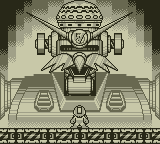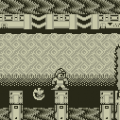- Mega Man (Series Introduction)
- Mega Man
- Mega Man 2
- Mega Man 3
- Mega Man 4
- Mega Man 5
- Mega Man 6
- Mega Man 7
- Mega Man 8
- Mega Man & Bass
- Mega Man 9
- Mega Man 10
- Mega Man 11
- Mega Man: Dr. Wily’s Revenge
- Mega Man II (Game Boy)
- Mega Man III (Game Boy)
- Mega Man IV (Game Boy)
- Mega Man V (Game Boy)
- Mega Man: The Wily Wars
- Mega Man (Game Gear)
- Rockman Complete Works
- Mega Man Anniversary Collection
- Mega Man 3 (DOS)
- Mega Man (DOS)
- Mega Man: Powered Up
- Super Adventure Rockman
- Wily & Right no RockBoard: That’s Paradise
- Mega Man Soccer
- Mega Man: The Power Battle
- Mega Man 2: The Power Fighters
- Rockman: Battle & Fighters
- Mega Man Battle & Chase
- Street Fighter x Mega Man
- Mega Man Tiger LCD Games
- Rockman & Forte (WonderSwan)
- Rockman’s IQ Challenge/Rockman Gold Empire/Rockman Strategy
- Mega Man Mobile Games / Panic Shot! Rockman
- Mega Man Unreleased Games
A Robot Master Exposition takes place within a museum. Dr. Wily drops in and manages to reprogram 8 of them to wreak havoc again. No surprises there, but now Dr. Light decides to get off his duff and assist Mega Man by running the first item shop in the series. For whatever reason, the flat plot results in a lot of intrigues and cutscenes leading up to a battleship in space (which looks like the Yamato/Argo with Wily’s skull slapped on it).
RKN-003 Ballade
A very proud Killer with a sense of honor and a more powerful secondary form. His Ballade Cracker is highly explosive and can be fired off in any direction. Though he strives to be the best, he is loyal to those who can beat him in a fight, and is willing to die to further their cause.
Probably the most polished of the Game Boy games, the fourth installment tweaks and refines the fine work of Mega Man III and adds more luster with fancy big sprites and a unique stage selection screen. The later NES titles were a bit weak, but many of the levels take wild tangents away from their source in terms in design, like Napalm Man’s and Crystal Man’s levels. There are a couple of added obstacles to freshen the experience, like shakey loose stone blocks in Pharaoh Man’s stage. A few of the weapons were given a secondary utility purpose like the Rain Flush extinguishing fires and freeze shifting sands, or the Ring Boomerang being able to grab hard-to-reach items. The story makes the bland premise as grandiose as possible, throwing in a self-destruct sequence, noble sacrifice and a massive giant robot to battle at the end. One odd choice for the second half is the mandatory set of WILY plates you have to collect in order to access the Wily Fortress. As if defeating the Robot Masters wasn’t enough, Mega Man must grab the flashing icons, one of which awaits in each stage. While they luckily aren’t hidden away too well, it can be a pain to have to replay the entire stage just to pick up the missed item – especially the slightly hard to reach plate in Stone Man’s level right near the boss shutters. A few of the stages suffer from repeated layouts that seem to pad levels longer than usual, case in point within Ring Man stage.
One tidbit to note is that there’s a hidden powerup to make the game easier. When Mega Man fails enough times in one stage, Dr. Light will upgrade the Mega Buster to charge faster and hit harder. This method can be done twice, but it doesn’t carry over with passwords. This easy mode ability is also hidden in the next Game Boy title. The item shop also sells the Weapon energy W-Tank, which debuts for the first time in the franchise. The ROM has dummied out alternate music tracks, mostly just slightly deviated takes on the finalized score.
Mega Man IV proves that having a formulaic premise doesn’t mean you can’t make the most of it. It would be the most recommended Game Boy game to try out after playing through the home series. Right after playing the following game.


